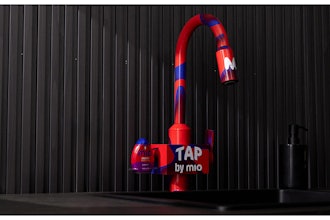By now, everyone is familiar with the Internet of Things (IoT) where everything big enough to hold an integrated circuit or CPU has one on board somewhere. They’re in our refrigerators, stoves, thermostats, garage door openers, credit cards, smartphones, and probably not unexpectedly, in our running shoes, powered by our own motion, to accurately report how far we walked, calories burned, and distance travelled.
Some might think this is excessive, but we have not yet begun to computerize all that we can. Currently we make computers that are so small, they almost vanish in a spoonful of salt or sugar.
This particular image is of IBM’s latest creation from March of 2018, actually sitting on a tiny pile of salt. It has all the computing power of the x86 series of computer Central Processing Units (CPUs) of the 1990s. The “die” sitting on the fingertip is actually about 40 of these micro-computers which haven’t been separated yet. Want to see it up close? Here’s a (silent) CGI video tour of just one of these tiny miracles, showing the millions of transistors that allow its existence.
Heading for the Future
The progress we’ve experienced since the first substantive computers were invented has been stunning. Back at the dawn of the computer age we expected computers to solve every problem. The original room-filling machines were fully-expected to shrink substantially. We just didn’t know how much.
Contemporary science writers wrote of tremendous technical leaps forward like this one about the incredible ENIAC computer:
“Where... the ENIAC is equipped with 18,000 vacuum tubes and weighs 30 tons, computers in the future may have 1,000 vacuum tubes and perhaps weigh just 1-½ tons.”
--Popular Mechanics magazine, March 1949, page 258
Uniqueness
Getting cheap jeans may be perfectly satisfactory to some, but when it comes to health and safety, that is a different matter. Counterfeit products could be eliminated by use of these tiny 10¢ computers.
The talk is now of using them to mark everything ever manufactured with its own indisputably unique Blockchain code, thus eliminating the possibility of fakes and knockoffs forever. Edible versions could be printed on malaria pills to prevent useless fakes from making their way to disaster zones; liquid versions could absolutely identify real, original wines made by reputable vintners, free of poisonous automobile antifreeze used to artificially enhance sweetness by criminals invading this profitable market. Individual identification for everything may still be a few years in the future, but we’re getting there.
Industrial Internet of Things (IIoT)
The next obvious step for manufacturing was simply to connect all the various bit-and-pieces involved in the manufacturing and assembly process so they could “talk” to each other, sharing vital process information. This is called machine-to-machine (M2M) communication.
Nowadays, computer tablet equipped employees will be instantly notified if the last batch of canned peaches didn’t reach pasteurization temperature in the canning process. They’ll know if cans of paint are being overfilled or under filled, and be able to alter the process without ever laying hands on the machinery itself.
More importantly, however, through the use of Artificial Intelligence (AI), the machinery could respond to these problems as they arose, providing instant, timely solutions (alter the timing, cooking the peaches a little longer until they reach the proper temperature; changing the fill parameters of the paint line) so that no bad product ever gets created in the first place.
Machine Vision has allowed us to teach AIs to interpret data visually. Say, for example, that undersized sheet stock was going into the laser cutter. Instead of cutting 15 out of 20 parts correctly and having five errors, the AI could simply stop the process and demand the proper size material for the job.
This non-human process management would mean responses faster than any human could provide. The increase in efficiency would be manifold, along with the elimination of waste, and consequently, the monetary gains would be multiplied.
Gaining Cooperation
The most important thing to remember is keeping your employees informed. Their natural fear is that they will be replaced, but this is completely unrealistic. When you increase productivity and increase profits you don’t need fewer people—you need more!
Granted, tasks will change; you’ll need people to monitor, train, and program the machines so the AIs can take over these mundane tasks. The machines are perfectly suited for the uncreative, unrewarding, mind-numbing tasks that are found throughout the manufacturing sector.
People, on the other hand, excel at creative tasks. Your HR Department needs to get out the message that current employees will be retrained for these new requirements at company expense. Current employees are far too valuable to lose, because they already understand the company culture, procedures, and the unique methods or technology that makes a business possible.
The greatest resistance to this level of change comes not from upper management, but from the employees-on-the-floor who are not kept up to date and informed of how they fit into the new venture. It doesn’t matter whether you are the janitor or the CEO. Everyone needs to feel they have a place, are valued, and have security in their job.
The Takeaway
We’re all looking forward to the day when we have a personal AI like Tony Stark’s (Ironman) electronic butler, Jarvis…and it is going to happen, eventually, because the technology is inevitable. In the meantime, the future is in our hands right now.
IIoT is not some passing fancy. It is already in use by the most progressive manufacturers. Whether you see it as a steam engine or a modern maglev, this train is leaving the station right now. Get on board, or your competitors will stampede right past you, leaving you in the dust cloud of historical failures.
Taylor Welsh is a content writer for AX Control.






















